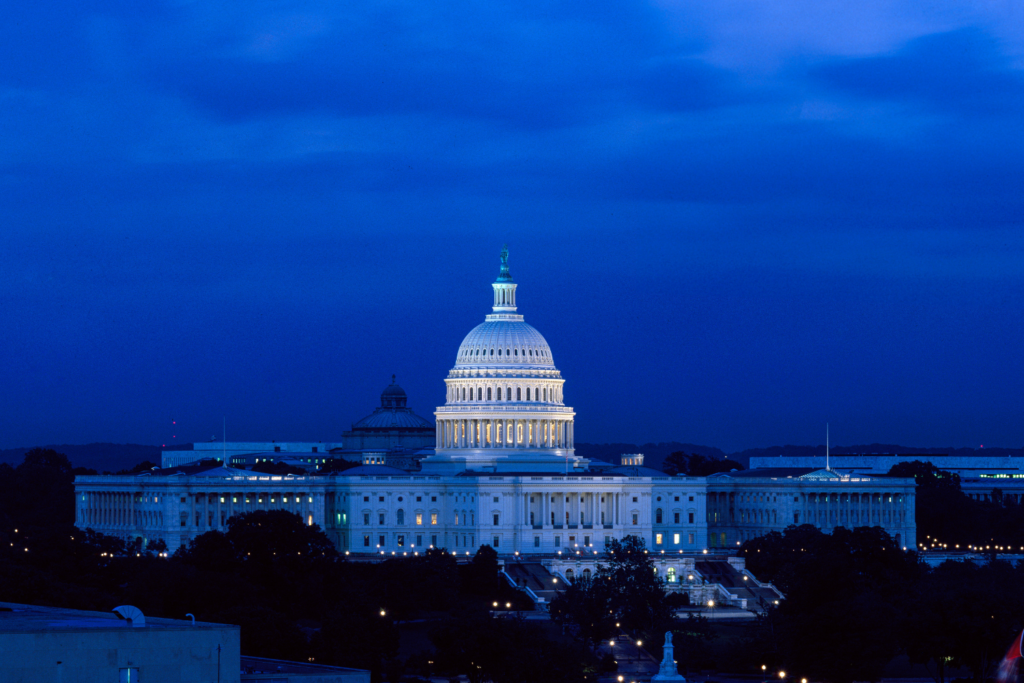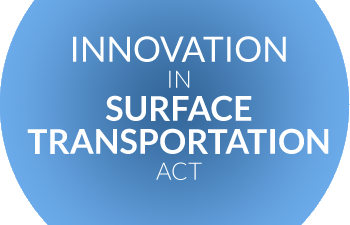
Support the new plan from a bipartisan duo of senators to send more transportation dollars to local communities

Two Senators championing the cause of giving local communities more control over their transportation dollars have introduced a modified plan to steer more federal transportation dollars directly to local communities of all sizes — reaching a compromise that they hope to incorporate into the Senate’s transportation bill as it heads to the floor.
The Innovation in Surface Transportation Act has been one of our biggest priorities for more than a year now. That bill would put a small share of each state’s federal transportation dollars into a competitive grant program so that towns and cities of all sizes could compete directly on the merits for transportation funds. Local communities get a seat at the table and get more access to federal dollars that can be spent on a wide variety of locally determined transportation projects and programs.
ISTA is a great proposal and it remains active in the House of Representatives, but the two Senators who introduced it have come together on a new plan to accomplish the same goal, one with even more widespread support.
A new proposal from Senators Wicker (R-MS) and Booker (D-NJ) would put a larger share of transportation dollars directly in the hands of local governments by increasing the amount of flexible federal Surface Transportation Program (STP) dollars directly given to metropolitan areas of all sizes.
This new proposal will hopefully be offered as an amendment to the long-term transportation bill currently before the Senate.
We need to drive up support for this plan now as the Senate considers their bill. Send a message to your Senators and urge them to support this provision from Senators Booker and Wicker.
It’s a proposal that works for red states and blue states, heavily urbanized areas and smaller rural towns — evident from the support of a Democratic Senator from the most urbanized state in the country, and a Republican Senator from the deep south where a large percentage of his state’s population lives in smaller urbanized areas.
How the current system works for local communities, and how it falls short
Today, small metro areas (under 200,000 people) are at the mercy of their state’s decision-making process for transportation spending in their area.
Large metro areas (over 200,000 people) directly receive a share of flexible federal dollars through a process known as suballocation. But in the smaller metro areas under 200,000 in population, those “suballocated” funds go directly to the state instead, which has total control over spending that money. The only basic requirement is that the state must spend a predetermined share of those funds within the state’s smaller metro areas, but the local community gets little say on how those dollars are spent.
Those decisions are left entirely up to the state, even though the funds are expressly intended by federal law for those smaller cities and metro areas.
While there’s some variety from state to state in how this plays out — a few select states are certainly more respectful of local communities’ wishes — it means that a local community could see their priorities passed over completely by the wishes of their state department of transportation. A state could have a pressing local priority like improving an important downtown street, and the state could instead decide to add a lane on the state highway on the edge of town instead. As long as the state spends the appropriate amount of money within that small metro area, that’s considered a proper use of the money intended for use in that community.
What would this proposal change?
The overall funding intended for metro areas and cities of all sizes would increase in two ways: First, the size of the flexible program known as the Surface Transportation Program (STP), which can be spent on almost anything from roads to bridges to transit to bike lanes, would be increased. Secondly, the share of STP that gets suballocated to metro areas increases from 50 percent of STP funding to 67 percent. That means more money will be given directly to metro areas and metropolitan planning organizations.
Last but not least, an important change is made to ensure that smaller metro areas aren’t left behind. Instead of being put solely at the state’s discretion, the share of STP dollars intended for communities under 200,000 people will be put into a competitive grant program for these areas, so these smaller communities will be able to apply for their share of the funding in a competitive grant program for their local priorities.
Who supports this new proposal in the Senate?
A compelling case can be made that Americans are willing to contribute more to invest in transportation, but they absolutely want to know that the dollars a) will be spent wisely on the projects that do the most get to work, school and daily needs and b) they want more decisions in the hands of the levels of government closest to them so they can hold them accountable.
A number of groups that represent local elected officials in communities of all sizes sent a letter to Congress this week endorsing this proposal. The National League of Cities, the U.S. Conference of Mayors, the National Association of Development Organizations, the National Association of Counties, the Association of Metropolitan Planning Organizations, and the National Association of Regional Councils all signed onto a letter to Congress supporting the Booker-Wicker proposal, urging it to be included as an amendment to the Senate’s full long-term transportation bill currently under consideration.
What does this mean for the Innovation in Surface Transportation Act
While numerous local mayors, county executives, chambers of commerce and other local leaders have backed the Innovation in Surface Transportation Act, it’s an even bigger sign of support to see these national associations which represent many of those leaders nationally endorse this new proposal, noting that it would be a win for mayors, cities, county executives, metro leaders and others.
But this new proposal wouldn’t have happened without the strong support that has been pouring in for months on the Innovation in Surface Transportation Act. Your emails, phone calls, letters and meetings have made it clear to these Senators that this idea has traction, and this new proposal is a direct result of your past support for the Innovation in Surface Transportation Act.
All of this means that in the Senate from here on out, we’ll be focusing our efforts on this amendment from Senators Booker and Wicker because it represents a far greater chance to accomplish many of the same goals as the Innovation in Surface Transportation Act. This new proposal is a smart compromise that should be incorporated into the full Senate long-term transportation bill currently on the floor, and one that will ensure that smart, locally-driven, homegrown transportation investments get the funding they need.
We’ll continue to drive up support for ISTA in the House, however, and we encourage you to continue supporting it in messages and calls to your representatives.



